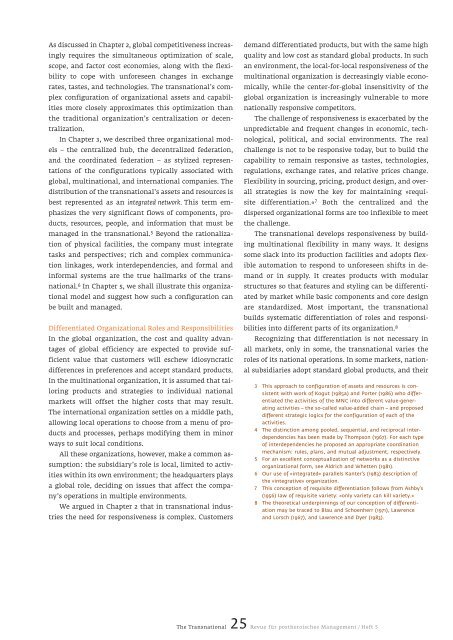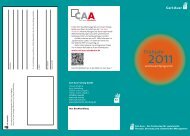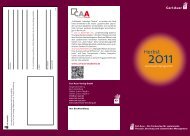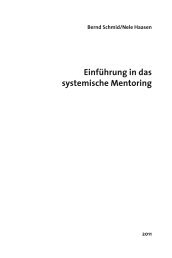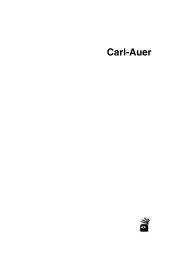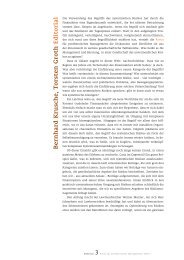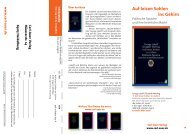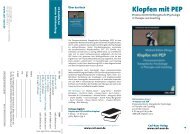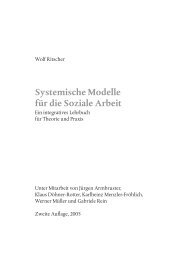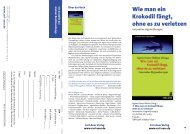K a trin G la tz e l E d ito ria l
K a trin G la tz e l E d ito ria l
K a trin G la tz e l E d ito ria l
Sie wollen auch ein ePaper? Erhöhen Sie die Reichweite Ihrer Titel.
YUMPU macht aus Druck-PDFs automatisch weboptimierte ePaper, die Google liebt.
As discussed in Chapter 2, global competitiveness increas-<br />
ingly requires the simultaneous optimization of scale,<br />
scope, and factor cost economies, along with the flexi-<br />
bility to cope with unforeseen changes in exchange<br />
rates, tastes, and technologies. The transnational’s com-<br />
plex configuration of organizational assets and capabil-<br />
ities more closely approximates this optimization than<br />
the traditional organization’s centralization or decen-<br />
tralization.<br />
In Chapter 3, we described three organizational models<br />
– the centralized hub, the decentralized federation,<br />
and the coordinated federation – as stylized representations<br />
of the configurations typically associated with<br />
global, multinational, and international companies. The<br />
distribution of the transnational’s assets and resources is<br />
best represented as an integrated network. This term emphasizes<br />
the very significant flows of components, products,<br />
resources, people, and information that must be<br />
managed in the transnational. 5 Beyond the rationalization<br />
of physical facilities, the company must integrate<br />
tasks and perspectives; rich and complex communica-<br />
tion linkages, work interdependencies, and formal and<br />
informal systems are the true hallmarks of the transnational.<br />
6 In Chapter 5, we shall illustrate this organizational<br />
model and suggest how such a configuration can<br />
be built and managed.<br />
Differentiated Organizational Roles and Responsibilities<br />
In the global organization, the cost and quality advantages<br />
of global efficiency are expected to provide sufficient<br />
value that customers will eschew idiosyncratic<br />
differences in preferences and accept standard products.<br />
In the multinational organization, it is assumed that tai-<br />
loring products and strategies to individual national<br />
markets will offset the higher costs that may result.<br />
The international organization settles on a middle path,<br />
allowing local operations to choose from a menu of products<br />
and processes, perhaps modifying them in minor<br />
ways to suit local conditions.<br />
All these organizations, however, make a common assumption:<br />
the subsidiary’s role is local, limited to activ-<br />
ities within its own environment; the headquarters p<strong>la</strong>ys<br />
a global role, deciding on issues that affect the company’s<br />
operations in multiple environments.<br />
We argued in Chapter 2 that in transnational industries<br />
the need for responsiveness is complex. Customers<br />
demand differentiated products, but with the same high<br />
quality and low cost as standard global products. In such<br />
an environment, the local-for-local responsiveness of the<br />
multinational organization is decreasingly viable economically,<br />
while the center-for-global insensitivity of the<br />
global organization is increasingly vulnerable to more<br />
nationally responsive compet<strong>ito</strong>rs.<br />
The challenge of responsiveness is exacerbated by the<br />
unpredictable and frequent changes in economic, technological,<br />
political, and social environments. The real<br />
challenge is not to be responsive today, but to build the<br />
capability to remain responsive as tastes, technologies,<br />
regu<strong>la</strong>tions, exchange rates, and re<strong>la</strong>tive prices change.<br />
Flexibility in sourcing, pricing, product design, and over-<br />
all strategies is now the key for maintaining »requisite<br />
differentiation.« 7 Both the centralized and the<br />
dispersed organizational forms are too inflexible to meet<br />
the challenge.<br />
The transnational develops responsiveness by building<br />
multinational flexibility in many ways. It designs<br />
some s<strong>la</strong>ck into its production facilities and adopts flexible<br />
automation to respond to unforeseen shifts in de-<br />
mand or in supply. It creates products with modu<strong>la</strong>r<br />
structures so that features and styling can be differentiated<br />
by market while basic components and core design<br />
are standardized. Most important, the transnational<br />
builds systematic differentiation of roles and responsibilities<br />
into different parts of its organization. 8<br />
Recognizing that differentiation is not necessary in<br />
all markets, only in some, the transnational varies the<br />
roles of its national operations. In some markets, national<br />
subsidiaries adopt standard global products, and their<br />
3 This approach to configuration of assets and resources is consistent<br />
with work of Kogut (1985a) and Porter (1986) who differentiated<br />
the activities of the MNC into different value-generating<br />
activities – the so-called value-added chain – and proposed<br />
different strategic logics for the configuration of each of the<br />
activities.<br />
4 The distinction among pooled, sequential, and reciprocal interdependencies<br />
has been made by Thompson (1967). For each type<br />
of interdependencies he proposed an approp<strong>ria</strong>te coordination<br />
mechanism: rules, p<strong>la</strong>ns, and mutual adjustment, respectively.<br />
5 For an excellent conceptualization of networks as a distinctive<br />
organizational form, see Aldrich and Whetten (1981).<br />
6 Our use of »integrated« parallels Kanter’s (1983) description of<br />
the »integrative« organization.<br />
7 This conception of requisite differentiation follows from Ashby’s<br />
(1956) <strong>la</strong>w of requisite variety: »only variety can kill variety.«<br />
8 The theoretical underpinnings of our conception of differentiation<br />
may be traced to B<strong>la</strong>u and Schoenherr (1971), Lawrence<br />
and Lorsch (1967), and Lawrence and Dyer (1983).<br />
The Transnational 25 Revue für postheroisches Management / Heft 5


